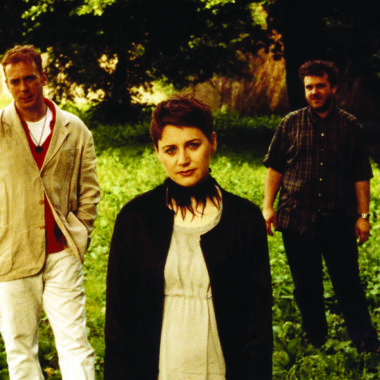
Cocteau Twins and the Language of Dreams
Cocteau Twins, formed in Grangemouth, Scotland in 1979, are often regarded as the architects of dream pop. Fronted by Elizabeth Fraser, with guitarist Robin Guthrie and later bassist Simon Raymonde, the band created music that seemed to exist outside the usual boundaries of rock and pop. Their sound was ethereal yet powerful, built on layers of shimmering guitar textures, lush atmospheres, and Fraser’s otherworldly vocals that often transcended language itself. For many listeners, Cocteau Twins provided not just music but a dreamscape, a place where sound and emotion merged into something uncanny and timeless.
Their early work on 4AD Records set them apart from the post-punk landscape of the early 1980s. Albums like Garlands hinted at their potential, but it was Head Over Heels in 1983 that revealed their unique identity. Guthrie’s guitar work, drenched in reverb and chorus effects, became less about riffs and more about creating textures, while Fraser’s vocals floated above with a mixture of fragility and power. Listeners were struck not only by the sound but also by the emotional force that came from Fraser’s enigmatic delivery, often using invented words and glossolalia to create a universal, untranslatable expression of feeling.
Throughout the 1980s, Cocteau Twins released a run of albums that defined dream pop and influenced what would later become shoegaze. Treasure (1984), Victorialand (1986), and Heaven or Las Vegas (1990) showcased a band constantly refining and expanding their palette. Heaven or Las Vegas in particular remains a landmark, often cited as one of the most beautiful and emotionally resonant albums of its era. Tracks such as “Cherry-Coloured Funk” and “Iceblink Luck” captured a balance of warmth, melancholy, and wonder that few bands have ever matched.
What made Cocteau Twins so influential was their ability to treat sound as a language in itself. Fraser’s voice, often unintelligible in a literal sense, communicated emotion more directly than words ever could. Guthrie’s guitar work blurred the line between melody and atmosphere, creating a backdrop that felt infinite. Together, they created music that bypassed rational thought and spoke directly to memory, longing, and imagination.
Their impact on shoegaze is profound. Bands like Slowdive, Lush, and Chapterhouse drew from the Cocteau Twins’ approach to texture and immersion, adopting their layering techniques and dreamlike sensibilities. Modern groups such as Wornsteps continue to find inspiration in the band’s refusal to separate emotion from atmosphere. For Wornsteps, Cocteau Twins represent the idea that music does not need to be grounded in traditional structure or language to move listeners deeply.
Even after disbanding in 1997, Cocteau Twins remain a touchstone for musicians across genres. Their influence stretches into electronic, ambient, and post-rock, and their catalogue continues to be discovered by new generations of listeners seeking music that feels timeless.
The legacy of Cocteau Twins lies in their ability to conjure a world entirely their own. They offered not just songs, but sonic landscapes that allowed listeners to dream with their eyes open. In doing so, they left behind a body of work that continues to shimmer like light through stained glass, elusive yet endlessly captivating.